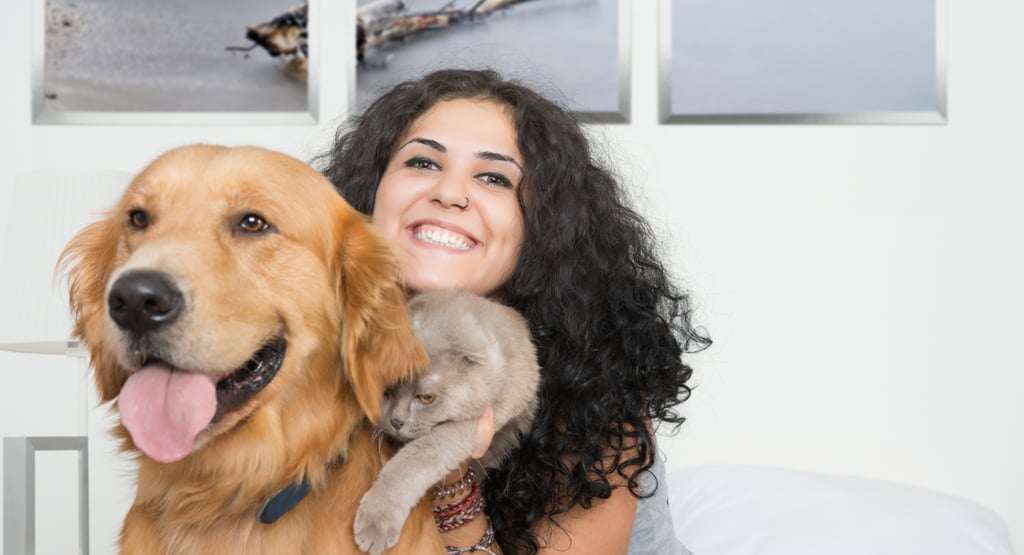Separation anxiety in pets: how to help your dog or cat cope
Learn how to help your dog or cat deal with separation anxiety. Discover the main causes, symptoms, and practical tips to reduce your pet’s stress and bring peace back to your home.
8/18/20253 min read


Separation anxiety in pets is far more common than most people realize. Dogs and cats can experience high levels of stress when left alone, which affects both their emotional and physical health — and, of course, their owners’ peace of mind.
If you’ve ever come home to find scratched furniture, chewed-up items, or angry neighbors complaining about excessive barking or meowing, your pet might be struggling with separation anxiety. The good news? There are effective ways to help your furry friend feel calmer and more secure when alone.
In this article, you’ll learn:
What separation anxiety is
The main symptoms in dogs and cats
How to identify when your pet needs help
Practical strategies to reduce stress
When to seek professional guidance
What Is separation anxiety in pets?
Separation anxiety happens when an animal feels fear, stress, or insecurity when left alone. It can develop for several reasons, including:
Strong attachment to the owner
Changes in routine or environment
Lack of stimulation when alone
Past trauma — especially in adopted pets
Unlike simple sadness, separation anxiety can lead to behavioral problems and even health issues if left untreated.
Common symptoms of separation anxiety in dogs
Dogs often show clear signs when they’re anxious. The most common include:
Excessive barking or howling when left alone
Destroying furniture, doors, or household objects
Scratching at doors or trying to escape
Peeing or pooping indoors, even if house-trained
Overexcitement when the owner returns home
Heavy drooling, shaking, or restlessness
Common symptoms of separation anxiety in cats
In cats, separation anxiety tends to be more subtle, but it can still cause significant stress. Watch out for:
Constant meowing or crying when the owner is away
Urinating outside the litter box or marking territory
Excessive scratching of furniture
Loss of appetite when left alone
Vomiting or digestive issues caused by stress
Extreme clinginess when the owner comes home
How to tell If your pet has separation anxiety
It’s not always easy to recognize — some behaviors may seem normal at first. Here are a few ways to confirm:
Ask neighbors if your pet barks or cries excessively when you’re gone
Use a home camera to observe behavior in your absence
Notice whether the stress occurs only when your pet is alone or in other situations too
If the signs are frequent and intense, there’s a good chance your pet is dealing with separation anxiety.
How to help your dog cope with separation anxiety
Dogs tend to be more dependent on their owners, but consistency and patience go a long way. Try these strategies:
Establish a Routine: Fixed times for meals, walks, and playtime create a sense of security.
Provide Physical Activity: Before leaving, take your dog for a walk or play session to release energy.
Offer Interactive Toys: Puzzle feeders or treat-dispensing toys keep the mind busy while you’re away.
Practice Short Departures: Start with a few minutes apart and gradually increase the duration.
Avoid Dramatic Goodbyes: Keep departures calm and natural — big emotional farewells can make anxiety worse.
How to help your cat cope with separation anxiety
Cats are known for their independence, but they can also struggle when left alone. Here’s how to make it easier:
Environmental Enrichment: Add scratching posts, shelves, tunnels, and toys to keep your cat entertained.
Soothing Sounds: Leave a TV or soft music playing — familiar sounds can reduce loneliness.
Automatic Toys: Moving or interactive toys can keep your cat mentally and physically stimulated.
Stable Routine: Cats love predictability. Stick to consistent feeding and play schedules.
Feline Aromatherapy: Synthetic pheromones (like Feliway) can help reduce stress and promote calmness.
Extra tips to reduce separation anxiety
These tips work for both dogs and cats:
Leave an item with your scent nearby — it helps comfort your pet.
Don’t reward anxious behavior by giving attention only when they cry or bark.
Reinforce calm behavior — praise and reward your pet when they stay relaxed alone.
Consider a second pet (only if it suits your lifestyle and resources).
When to seek professional help
If your pet continues to show strong signs of anxiety despite your efforts, it’s time to consult a specialist:
Veterinarian: To rule out medical issues that may worsen anxiety.
Trainer or Behaviorist: Professionals can teach desensitization and counter-conditioning techniques.
Complementary Therapies: Flower essences, herbal supplements, or medication — but always under veterinary supervision.
Ignoring the problem can make it worse over time, affecting your pet’s health and happiness.
Final thoughts
Separation anxiety in dogs and cats requires patience, structure, and empathy. The sooner you recognize the signs and take action, the easier it will be to help your pet feel safe and confident when alone.
Remember: every animal is unique. What works for one may not work for another. Observe your pet closely, try different strategies, and don’t hesitate to seek professional help if needed.
Your furry friend deserves a balanced, peaceful, and happy life — and you deserve the peace of mind that comes from knowing they’re okay, even when you’re not around.
Health
Tips for a healthy and balanced life.
© 2025. All rights reserved.
Well-being
Privacy Policy
Terms and conditions
